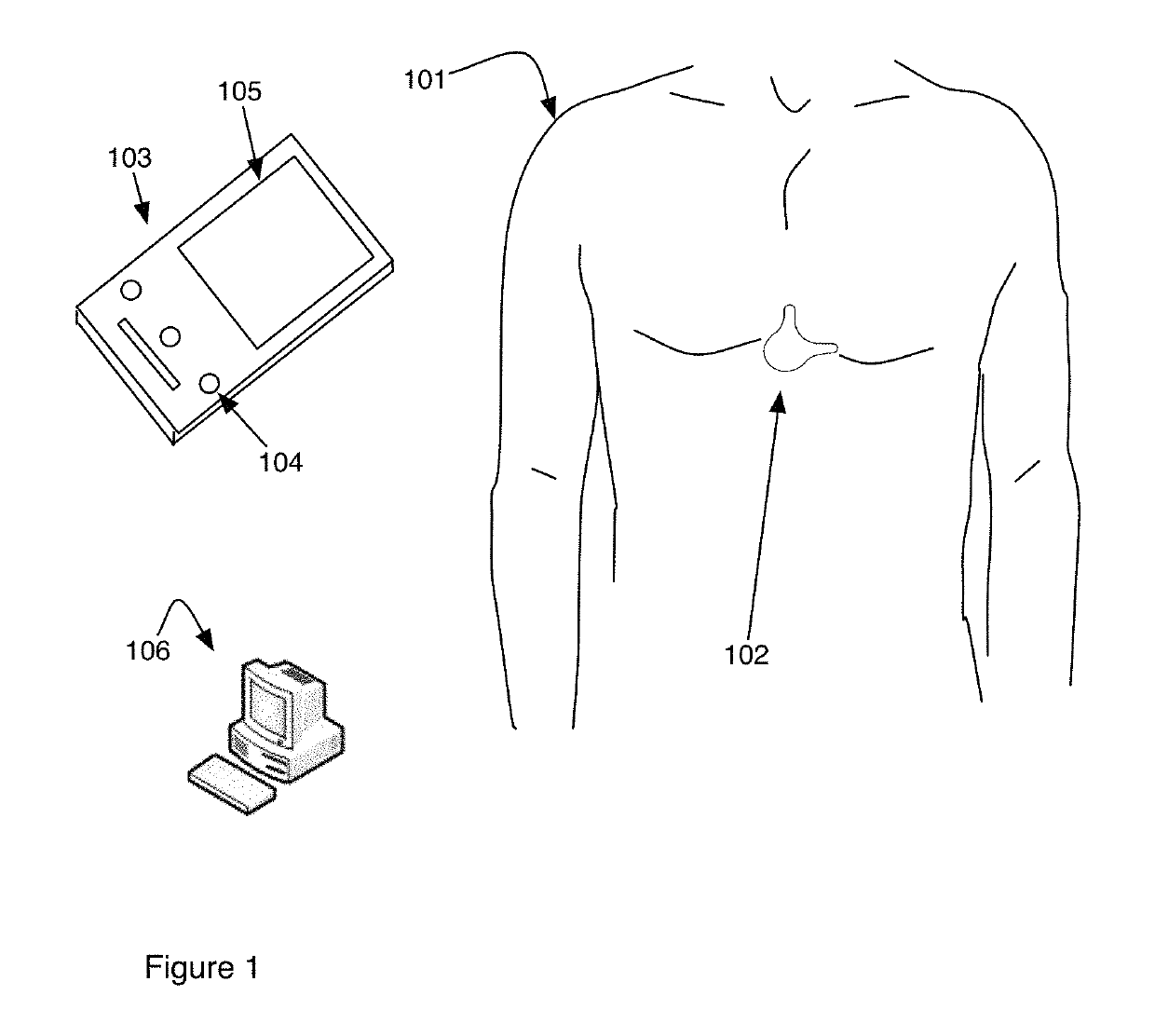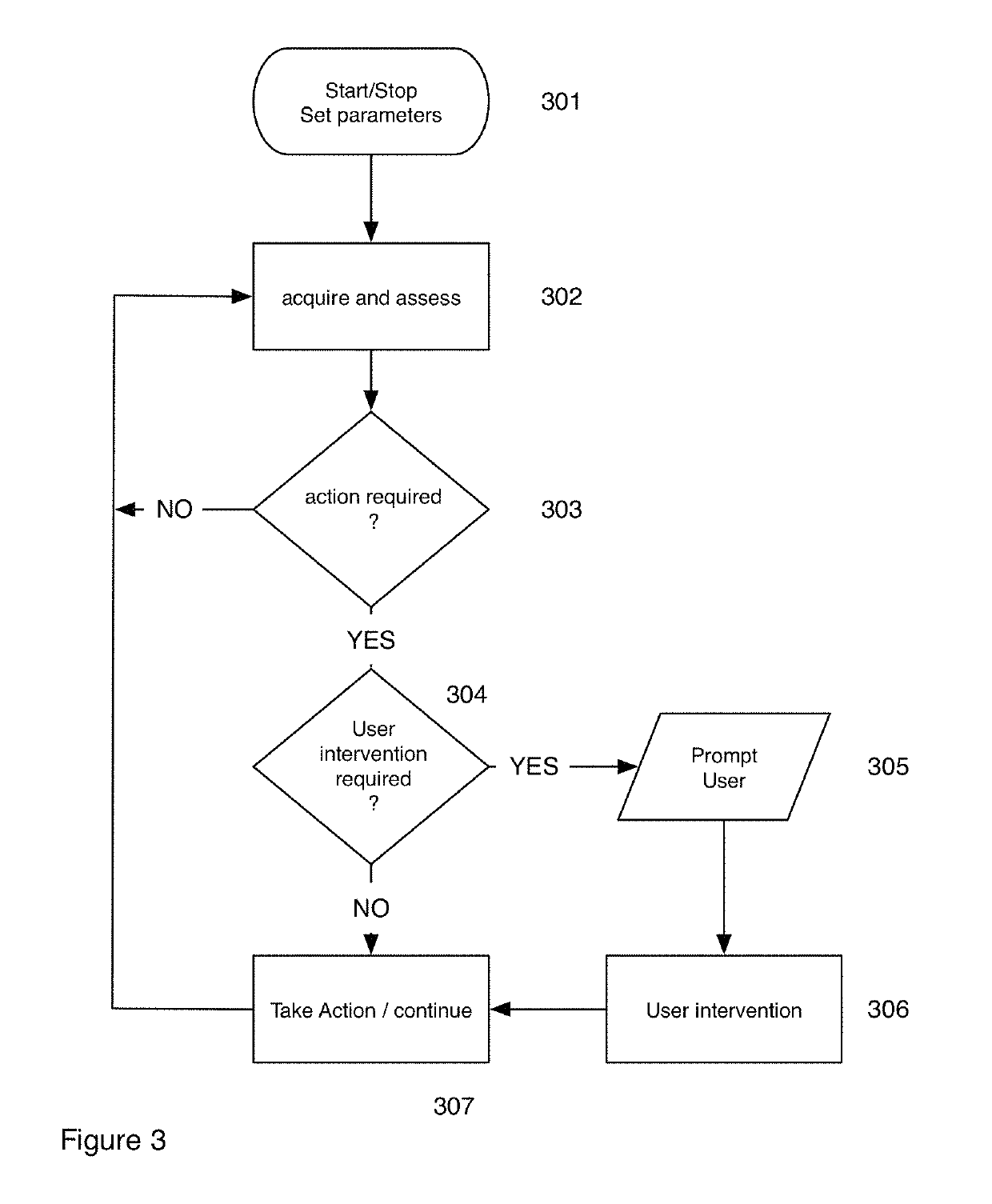Electrocardiogram device and methods
a technology of electrocardiogram and electronic device, applied in the field of health care devices, can solve the problems of high cost, high accuracy, and high cost, and achieve the effect of increasing the accuracy and specificity of applying
- Summary
- Abstract
- Description
- Claims
- Application Information
AI Technical Summary
Benefits of technology
Problems solved by technology
Method used
Image
Examples
Embodiment Construction
[0026]Referring to FIG. 1 systems that may be used to practice the invention are shown. A physiological data acquisition device 102 is attached to a patient 101 and acquires physiological data from the patient. Nonlimiting examples of physiological devices 102 include heart monitors as shown, such as would be used to acquire continuous electrocardiogram (ECG) data from a patient such as in a Holter scan as is known in the industry, electroencephalogram (EEG) data, and devices that acquire movement information such as a respiration monitor, chemistry analysis monitors and temperature monitors. In one embodiment the data acquisition device 102 is connected to a local communication device 103. The local device may include a display 105 and a user interface 104. The data from the data acquisition device 102 is transferred to the local communication device to a computing device 103. The local communication device may further include a computing device programmed for data analysis. In ano...
PUM
 Login to View More
Login to View More Abstract
Description
Claims
Application Information
 Login to View More
Login to View More - R&D
- Intellectual Property
- Life Sciences
- Materials
- Tech Scout
- Unparalleled Data Quality
- Higher Quality Content
- 60% Fewer Hallucinations
Browse by: Latest US Patents, China's latest patents, Technical Efficacy Thesaurus, Application Domain, Technology Topic, Popular Technical Reports.
© 2025 PatSnap. All rights reserved.Legal|Privacy policy|Modern Slavery Act Transparency Statement|Sitemap|About US| Contact US: help@patsnap.com



